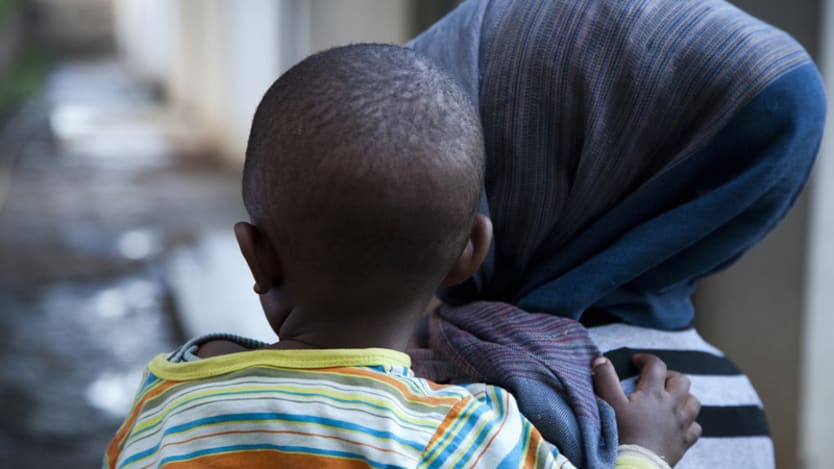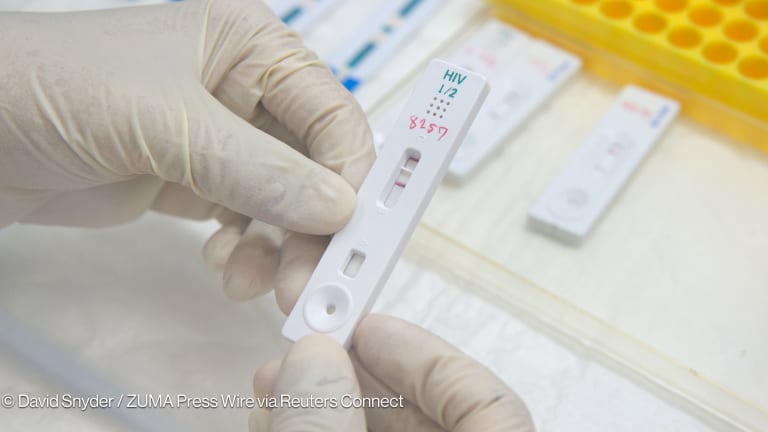
Over the past 15 years, those fighting to end HIV/AIDS have been heartened by real progress.
Aided immensely by United States investment of $73 billion since 2004, the international community has worked steadfastly toward the goal of ending HIV/AIDS by 2030. New infections have declined overall for two decades, and AIDS-related deaths have fallen for more than a decade. Millions of lives have been saved and millions of infections avoided.
These victories have been hard-won and worthy of celebration. But the glass we toast with is half empty.
Funding for the HIV/AIDS response has been relatively flat for the past decade. Though it increased 8 percent in 2017, it fell short of the need. We’re missing key global milestones, and every year we miss the mark, the goal of ending HIV/AIDS in children and youth inches farther from us.
The ultimate measure of shortcomings is the number 110,000. That’s how many children and youth aged 15 and younger died from HIV-related illnesses last year. This, at a time when we know how to save every one of those lives.
AIDS is a unifying issue in Washington and at the United Nations, and it is time we collectively hold ourselves accountable for what we have not accomplished.
Status quo efforts will not end this epidemic. We have to commit to changing the on-the-ground realities that complicate the fight against HIV/AIDS, such as homophobia, gender inequity, and stigma. We have to fund prevention, testing, and treatment at a level that enables the world to extinguish the epidemic, not just keep it at bay.
I lead a foundation that for 30 years has sought to end AIDS in children and adolescents. For me, being accountable means taking a long hard look at how many are newly infected with HIV or dying from AIDS-related causes, as compared with benchmarks set by the U.N. And the picture, I must admit, is daunting.
By 2018, the world was to have reduced annual new infections among children younger than 15 to 40,000. Global projections show that by the end of the year, more than 150,000 will have become infected in 2018 — nearly four times the goal.
Other statistics lay out the challenges before us.
• Only half of the 1.8 million children living with HIV received life-saving treatment in 2017 — nowhere near the goal of 90 percent by 2020.
• 340,000 adolescents and young women were newly infected with HIV in 2017, a far cry from the goal of 100,000 new HIV infections by 2020.
• The percentage of pregnant or breastfeeding women with HIV on treatment, which prevents transmission to their children, was 80 percent in 2017. That percentage has only inched up yearly since 2014, which means we’re unlikely to reach the global goal of 95 percent by 2020.
There’s no single reason the global effort to end AIDS in children and adolescents is stagnating. Everyone has fallen short. Governments have reduced or flattened their funding. Legislators in some countries have criminalized homosexuality or prevented pregnant adolescent girls from going to school. Communities continue to stigmatize children with HIV. Nonprofits working on the ground, such as the Elizabeth Glaser Pediatric AIDS Foundation and its partners, have not been able to find as many HIV-positive children as we’d thought we could to get them treatment.
We must accelerate our efforts. For EGPAF, that means focusing on adolescents and young adults through age 24, a group representing a growing share of people living with HIV. Although adolescents make up less than 5 percent of people with HIV, they represent 14 percent of new infections. Eighty-four percent of adolescents living with HIV today live in Africa, where AIDS is a leading cause of adolescent death. With Africa’s youth population predicted to grow quickly over the next few decades, we must ensure that growth does not fuel the epidemic.
To do that, we must redouble our efforts to prevent young people from contracting HIV and promptly connect them with care if they are infected. That starts with making it easier and more socially acceptable to get tested. Stigma and inconvenience continue to block many adolescents from diagnosis and care — a problem that can be partially solved by including specially trained young people in adolescent outreach and support systems.
Young people also need clinics, including school-based mobile clinics, that cater to their overall health needs and their schedules and lifestyles. They need prevention of mother to child transmission programs specifically designed for teen mothers. They need a voice in global forums about HIV/AIDS.
The U.S. Congress is also doing its part to recommit to the global fight against HIV/AIDS. It recently reauthorized the legislation driving the U.S. government’s 15-year-old global HIV/AIDS program, the President’s Emergency Plan for AIDS Relief, which enjoys robust bipartisan congressional support. Notably, in its deliberations, Congress has emphasized maintaining focus on children and adolescents and increasing flexibility in funding for adolescent girls.
These are important steps, but they need adequate funding. Because no child should be diagnosed with HIV/AIDS, let alone be born with it. No adolescent should face stigma and discrimination simply for being HIV-positive. No one should die from AIDS, and our work is not done until it is so.








